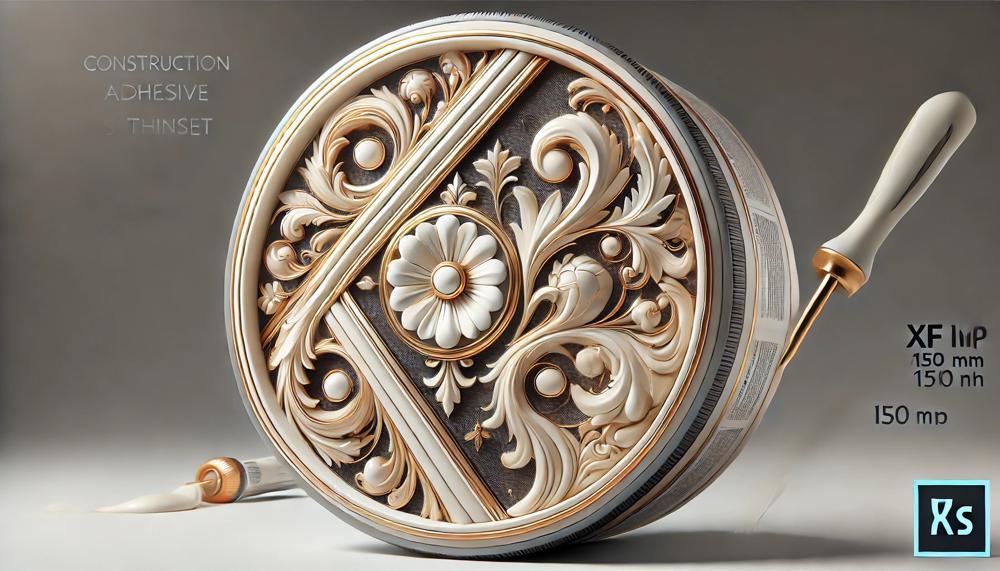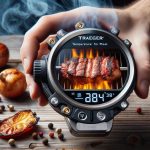Did you know that nearly 60% of grill owners report issues with maintaining the right temperature during a cookout? This statistic becomes even more interesting when considering the growing popularity of high-tech grills like those from Traeger, known for their precision and consistency.
However, despite their reputation, even Traeger grills can sometimes fall short of reaching the desired temperature, which can turn a weekend barbecue into a less-than-satisfactory meal prep experience.
This blog post explores the common reasons why your Traeger grill might not be heating up as expected. Understanding these can help you troubleshoot effectively, ensuring that your next grilling session goes smoothly. Here’s what you can expect to learn:
- Potential Causes: We’ll dive into the most common factors that can prevent your grill from reaching the desired temperature.
- Troubleshooting Tips: Practical advice on how to diagnose and fix issues related to temperature control.
- Maintenance Best Practices: Guidelines on how to maintain your Traeger grill to avoid future temperature mishaps.
Whether you’re a seasoned grill master or a weekend warrior, getting to the heart of these temperature issues can make a significant difference in your grilling results. Let’s get started on solving this heated dilemma.
Contents
Hot Rod Deterioration
To prevent hot rod deterioration in your Traeger grill and ensure it consistently reaches and maintains the ideal temperature for cooking, follow these essential maintenance tips:
| Maintenance Tip | Procedure | Frequency |
| Clean out ash | Use a shop vac or Traeger’s designated ash cleanout tool to remove ash accumulation around the hot rod, which can impede its function and lead to temperature inconsistencies. | After every use or after accumulating significant ash |
| Inspect and clean the hot rod | Remove the hot rod and gently clean it with a wire brush or sandpaper to eliminate any grease or food particle buildup that could hinder ignition. | Annually or more frequently with heavy use |
| Protect from moisture | Ensure your Traeger is covered when not in use or store it in a sheltered area to prevent moisture buildup from rain or snow, which can cause rust and corrosion. | As needed, particularly in wet climates or seasons |
| Check and replace the hot rod | Regularly assess the hot rod’s condition and replace it if your grill struggles to reach or maintain set temperatures despite thorough cleaning and proper pellet management. | Every 2-3 years, or as performance issues arise |
| Manage pellet quality and storage | Use high-quality pellets and store them in a dry, secure place to prevent swelling and ensure efficient ignition and burning. | Continuously monitor pellet condition |
By adhering to these guidelines, you’ll help ensure that your Traeger grill remains in peak condition, reducing the risk of hot rod deterioration and maintaining optimal cooking performance.
Low-Quality Pellets
Low-quality pellets can significantly impact the temperature control and overall efficiency of your Traeger grill. These pellets tend to burn unevenly and less intensely, which often leads to notable fluctuations in temperature.
This inconsistency can disrupt the cooking process, making it difficult to achieve those perfectly smoked meats.
Key Points on How Low-Quality Pellets Affect Temperature:
- Burn Efficiency: High-quality pellets are compact and dense, allowing them to burn more consistently and efficiently. In contrast, low-quality pellets often have a higher moisture content or may be less densely packed, which results in a shorter, less even burn.
- Temperature Fluctuations: When pellets don’t burn consistently, the temperature in your Traeger can swing unpredictably. This makes it challenging to maintain the low and slow conditions ideal for smoking.
- Ash Production: Poor quality pellets usually produce more ash. Excessive ash can accumulate quickly in the firepot, which can smother the fire and reduce the grill’s temperature.
Practical Advice:
To ensure your Traeger operates at optimal temperatures, always choose high-quality pellets that have a low moisture content and are well-formed. Check for pellets that break with a snap and have a shiny appearance to indicate freshness and high quality.
Table of Temperature Effects:
| Pellet Quality | Burn Quality | Temperature Stability |
| High-Quality Pellets | Consistent, long-lasting | Stable, predictable |
| Low-Quality Pellets | Inconsistent, quick to burn out | Unstable, fluctuating |
When smoking or grilling, ensuring your Traeger is fed with the best quality pellets not only maintains the desired temperature but also enhances the flavour of your food, providing that perfect smoke ring and tender texture.
Not Enough Pellets in the Grill
Detecting a shortage of pellets in your Traeger grill is vital for uninterrupted and efficient cooking. If your grill starts to exhibit a drop in temperature or uneven cooking patterns, it’s likely a sign that the pellet supply in the hopper is low. Here’s a step-by-step guide on identifying and resolving the issue of not having enough pellets in your Traeger grill:
- Visual Inspection: First and foremost, check the pellet hopper. A simple glance can tell you if the level is perilously low or if there’s a blockage preventing pellet flow.
- Temperature Fluctuations: Watch the grill’s temperature gauge. A significant drop in temperature often indicates a depletion of pellets.
- Listen for Changes: If the grill becomes unusually quiet, the auger may not be feeding pellets, suggesting the hopper is empty.
To fix these issues and ensure a smooth grilling experience, follow these corrective steps:
- Refill the Hopper: Immediately add high-quality pellets to the hopper. Always keep spare pellets on hand to avoid this situation.
- Check for Blockages: Pellets can sometimes get stuck or form clumps, especially if they are of low quality or have absorbed moisture. Inspect the hopper and the feeding mechanism for any obstructions.
- Maintenance Check: Regularly clean your grill to prevent pellet dust and debris from clogging the auger and hopper.
- Sensor Check: Occasionally, faulty sensors might incorrectly signal an empty hopper. Consulting your Traeger manual or a professional might be necessary if sensor issues persist.
Blown Fuses

Below are a few likely culprits and steps to fix this issue, ensuring your grill is back to its best.
Potential Reasons for a Blown Fuse:
- Loose Power Cord: A wobbly power connection can lead to inconsistent electrical flow and potentially blow a fuse.
- Damaged Hot Rod: The hot rod ignites pellets; if it’s faulty, it can draw excessive current.
- Malfunctioning Auger Motor: This motor moves pellets into the firepot. If it’s defective, it can cause an electrical overload.
- General Wear and Tear: Over time, components degrade and can disrupt normal operations, leading to blown fuses.
Steps to Fix a Blown Fuse:
| Step | Action | Details |
| 1 | Power Down and Disconnect | Ensure the grill is off and unplugged before inspection. |
| 2 | Inspect the Hot Rod | If reconnecting the hot rod doesn’t solve the issue, replace it. |
| 3 | Check the Auger Motor | After the hot rod, check if the auger motor is the cause and consider replacing if defective. |
| 4 | Examine Power Cord | Look for any signs of wear or damage. Replace if necessary. |
| 5 | Reconnect and Test | After each check, reconnect parts and test the grill to see if the issue persists. |
A key bit of advice is to take your time when diagnosing and repairing your Traeger. Rushed fixes can lead to mistakes and more blown fuses. Always ensure that the power is completely disconnected before performing any checks or repairs to avoid further damage or personal injury.
Too Much Debris in the Firepot
Excess debris in the firepot of a Traeger grill can significantly hinder its ability to maintain consistent temperatures, crucial for quality barbecuing. When the firepot becomes clogged with ash and unburned pellet residue, it can lead to several issues that impact the grill’s performance.
| Issue | Consequence | Explanation |
| Restricted Airflow | Uneven Temperature | The accumulation of debris restricts the flow of air necessary for the pellets to combust efficiently. This can cause the fire to smoulder rather than burn vigorously, leading to fluctuating temperatures. |
| Overheating | Potential Damage | If the air cannot circulate properly, heat can build up within the firepot itself rather than spreading evenly throughout the grill. This overheating can harm the grill’s components and reduce its lifespan. |
| Poor Combustion | Low Heat Generation | Debris can prevent the pellets from igniting properly, resulting in a lower temperature than set. This affects the cooking process, as the grill struggles to reach and maintain the desired heat. |
To ensure your Traeger grill operates effectively, it’s wise to regularly clean out the firepot, removing ash and residue.
Moisture in the Grill
Moisture can seriously impair the function of a Traeger grill, mainly by affecting the efficiency of its temperature management system. Moisture in the grill causes wood pellets to absorb water, leading to poor combustion as these damp pellets struggle to burn properly. This results in a lower heat output and can prevent the grill from reaching the desired cooking temperatures.
To counteract moisture-related issues in a Traeger grill, several proactive steps are essential:
- Keep the Grill Covered: Use a high-quality grill cover to shield your Traeger from rain, snow, and overnight dew. This simple action keeps external moisture at bay.
- Regular Maintenance: Clean the internal components of your grill regularly. Focus on the auger and temperature sensor, which are critical for accurate temperature control and can be hindered by moisture accumulation.
- Use a Thermal Blanket: In colder or more humid environments, wrapping your grill in a thermal blanket can help maintain a consistent cooking temperature by insulating the unit from moisture and cold air.
- Manage Airflow: Proper airflow is crucial for minimizing moisture ingress and ensuring efficient pellet combustion. Keep the chimney damper open for adequate ventilation and adjust the bottom vents based on your cooking needs.
- Store Pellets Properly: Keep your wood pellets in a dry, sealed container to prevent them from absorbing moisture from the environment, which would compromise their quality and effectiveness.
Broken Induction Fan
A broken induction fan in a Traeger grill leads to significant challenges in maintaining and reaching the desired cooking temperatures. The induction fan’s primary role is to circulate hot air uniformly throughout the grill, ensuring that the food cooks evenly and thoroughly. Here’s a breakdown of the specific issues caused by a malfunctioning fan and the direct impacts on grilling:
| Impact on Temperature Stability | Without the fan’s air circulation, hot spots and cold spots develop inside the grill, leading to inconsistent cooking results. |
| Difficulty in Reaching Set Temperatures | The lack of proper air circulation means the grill struggles to reach set temperatures, making it difficult to cook food as per recipes or personal preferences. |
| Premature Extinguishing of Fire | Poor air flow can cause the fire in the pellet burner to die prematurely, as it lacks sufficient oxygen, which is crucial for maintaining combustion. |
| Increased Pellet Consumption | Since the grill does not reach the desired temperature efficiently, it tends to consume more pellets in an attempt to generate more heat. |
To resolve these issues, it’s advisable to inspect the fan for any obstructions or damages regularly. If the fan is indeed broken, replacing it promptly will restore the grill’s functionality, ensuring that the heat is distributed evenly and the desired cooking temperatures are reached efficiently.
Conclusion
Mastering the art of grilling with a Traeger can transform weekend cookouts into gourmet adventures.
Yet, challenges like the grill not reaching desired temperatures can hinder this experience. Several key factors can cause these heating issues, including deteriorated hot rods, the use of low-quality pellets, or even something as simple as not having enough pellets in the grill.
Additional complications may arise from blown fuses, excessive debris in the firepot, moisture within the grill, or a broken induction fan. Addressing these issues involves regular maintenance, such as cleaning the grill thoroughly, using high-quality pellets, and ensuring all components, like the induction fan and hot rod, are in good working condition.
By proactively maintaining your grill, you safeguard the precision and enjoyability of your cooking experience, ensuring every BBQ is memorable and every meal is cooked to perfection.






